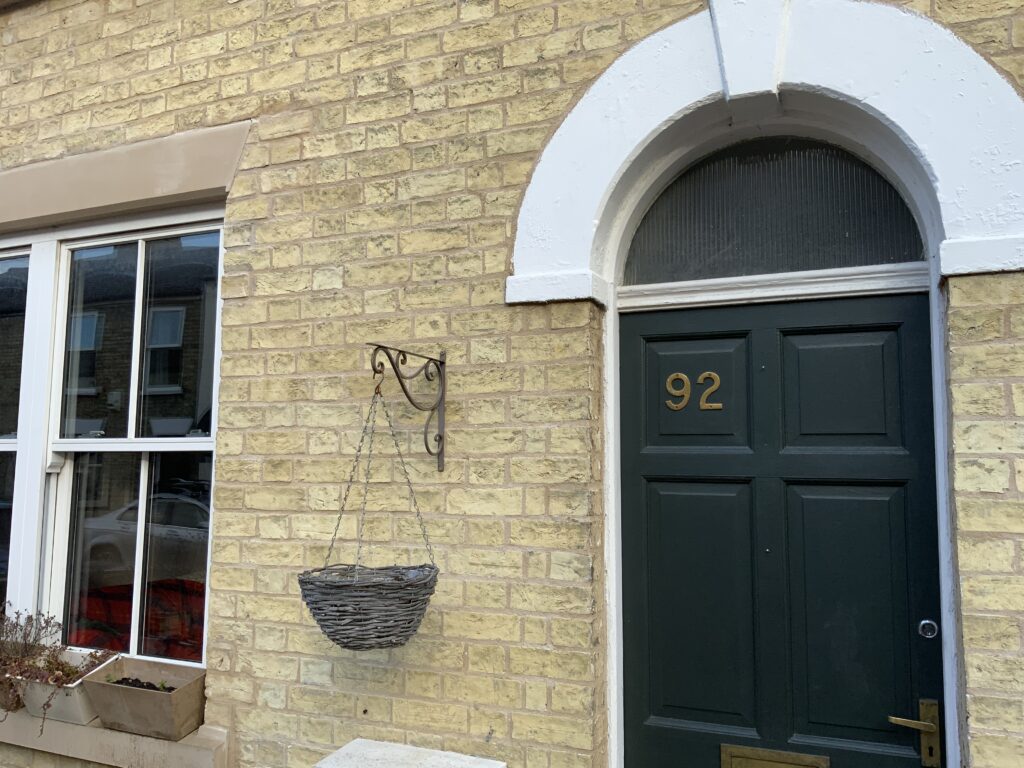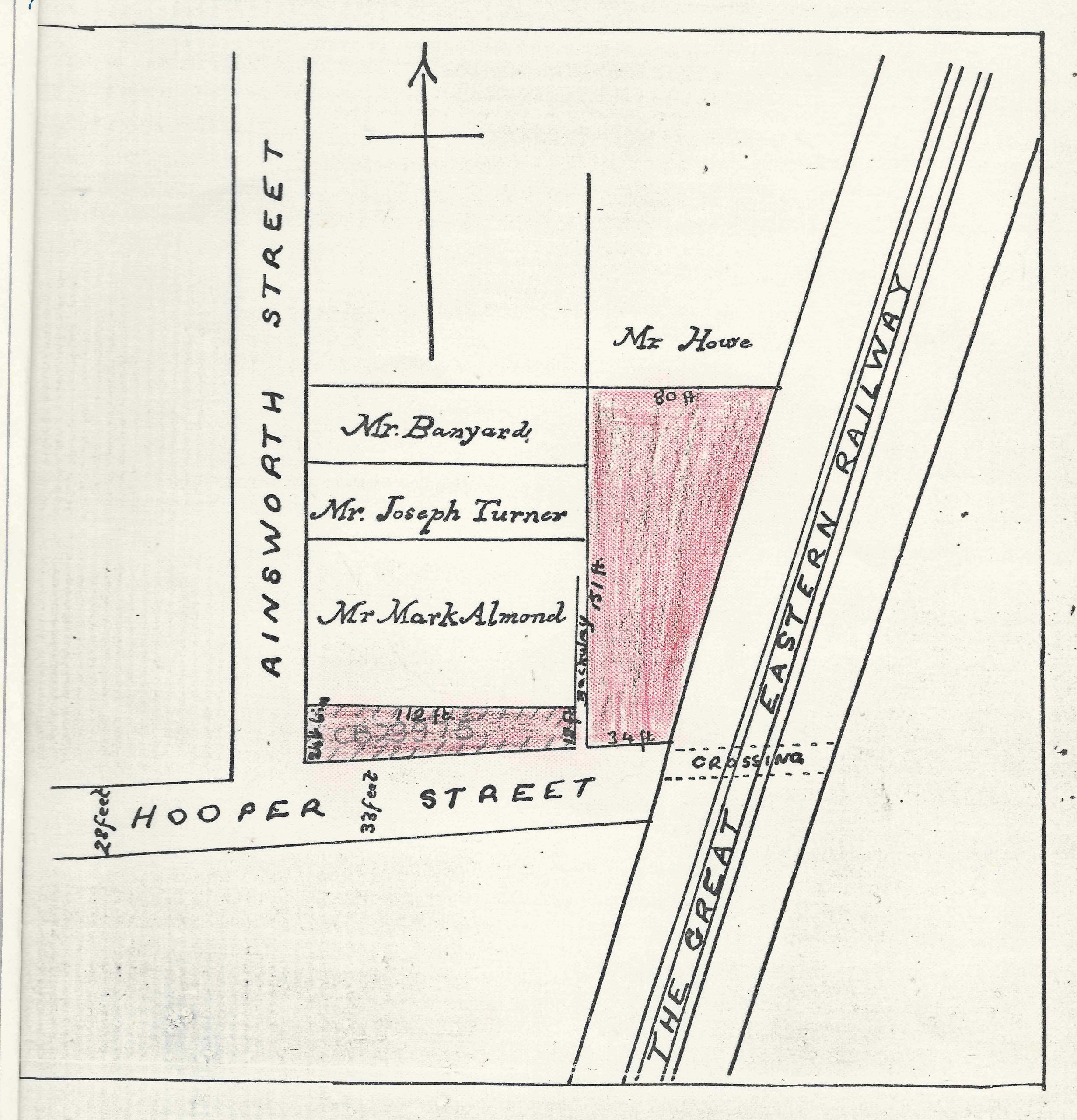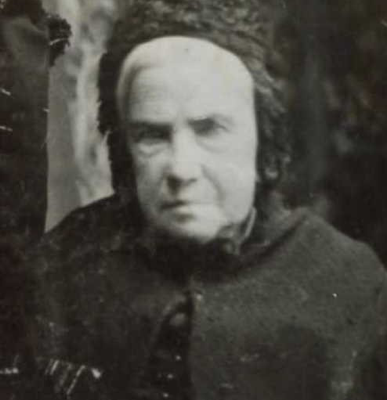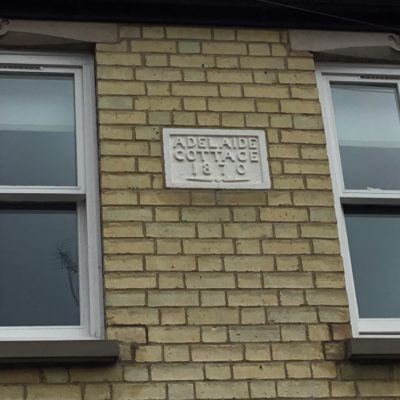Search by topic
- archaeology
- Building of Local Interest
- charity
- church
- crime
- dressmaker
- fire
- Great Eastern Railway
- Listed building
- Mapping Relief
- medieval
- oral history
- poverty
- Public House
- Rattee & Kett
- Religious House
- Roman
- scholar
- school
- Then and Now
- tudor
- women
- work
- world war one
- world war two
Search by text

92 Ainsworth Street
92 Ainsworth Street
Number 92 is one of four mid-terraced houses on the east side of Ainsworth Street, built around 1870.
1871 census for household 219*
William Banyard, head, 36, railway engine driver, b. Cherryhinton, Cambridgeshire
Elizabeth A Banyard, wife, 30, b. Swaffham, Cambridgeshire
Alfred J Banyard, son, 9, scholar, b. Teversham, Cambridgeshire
Maria E Banyard, daughter, 5, scholar, b. Cambridge
Louisa Gillson, servant, 23, general domestic servant, b. Swaffham, Cambridgeshire
*In 1871 Ainsworth Street was not yet numbered. Identification of houses is tentative.
William Banyard lived at 92 Ainsworth Street from 1871 until his death in 1922. A sketch map from 1874 indicates that a Mr Banyard – most likely William himself – owned property in Ainsworth street, corresponding to nos. 92 and 94. The other two houses in the terrace, nos. 96 and 98, were owned by Joseph Turner, and the neighbouring terrace of five houses by Mark Almond. All three men were railway engine drivers – a respected and well-paid job. They may all have taken out mortgages to invest in property in the late 1860s, when Joseph Sturton started advertising these plots of land for sale.
As a railway engine driver, William would have controlled the locomotive’s acceleration and braking, along with keeping the engine running. He would have worked alongside a fireman or stoker, whose job it was to stoke the fire with coal.
William’s son Alfred Banyard joined the Royal Artillery in 1883 and served in India.
1881 census
William Banyard, head, 45, engine driver on GER, b. Cherry Hinton, Cambridgeshire
Elizabeth Banyard, wife, 40, b. Swaffham Bulbeck, Cambridgeshire
Maria Banyard, daughter, 15, scholar, b. Cambridge
Maria married Manasseh Charles Green in 1889. In 1901 she and Manasseh were living at 98 Ainsworth Street.
1891 census
William Banyard, head, 56, railway engine driver, b. Cherryhinton, London
Elizabeth A Banyard, wife, 50, b. Swaffham Bulbeck, Cambridgeshire
1901 census
William Banyard, head, 67, railway engine driver, b. Cherry Hinton, Cambridgeshire
Elizabeth A Banyard, wife, 60, b. Swaffham Bulbeck, Cambridgeshire
Phebe Hart, boarder, 60, sick nurse, b. Comberton, Cambridgeshire
Elizabeth Banyard died in 1906.
1911 census
William Banyard, head, widower, 76, retired railway engine driver, b. Cherry Hinton, Cambridgeshire
Louisa Harrison, sister-in-law, widow, 62, at home, b. Little Swaffham Bulbeck, Cambridgeshire
1921 census
Manasseh Charles Green, head, 55, foreman warehouseman, b. Horningsea, Cambridgeshire
Maria Elizabeth Green, wife, 54, household duties, b. Cambridge
Florence Ruth Green, daughter, 28, tailoress, b. Cambridge
Bernard William Green, son, 18, clerk, University Syndicate Buildings, Mill Lane, b. Cambridge
William Banyard, father-in-law, 87, retired railway driver, GER, b. Cherryhinton, Cambridgeshire
William Banyard died on 13 April 1922. Maria and Manasseh lived at 92 Ainsworth Street until at least 1938.
Source: 1871–1921 England Census, Royal Hospital Chelsea Pensioner Soldier Service Records, 1760–1920, England & Wales, Civil Registration Marriage Index, 1837–1915, British Army Service Records, England & Wales, National Probate Calendar (Index of Wills and Administrations), 1858–1995, Cambridgeshire, England, Electoral Registers, Burgess Rolls and Poll Books, 1722–1966
Contribute
Do you have any information about the people or places in this article? If so, then please let us know using the Contact page or by emailing capturingcambridge@
License
This work is licensed under CC BY-NC-SA 4.0









